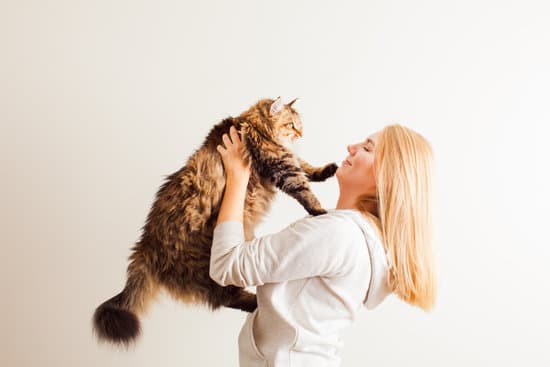Decoding the Science Behind This Behavior
Cats are known for their love of boxes, and it’s a behavior that has puzzled pet owners for decades. Whether it’s a shoebox, a cardboard box, or a plastic container, cats seem to be irresistibly drawn to them. But why do kitty love boxes? Is there a scientific explanation for this behavior?
According to animal behavior experts, there are several reasons why kittys love boxes. One reason is that boxes provide a sense of security and comfort for kittys. Boxes are enclosed spaces, which make kittys feel safe and protected. In the wild, kattins seek out enclosed spaces to hide from predators, so the instinct to seek out boxes may be ingrained in their DNA.
Another reason why kittys love boxes is that they provide a great place to nap. Cats are known for their love of sleeping, and boxes are the perfect size for a cozy kitty nap. Boxes also provide insulation, which can help kattins regulate their body temperature and stay warm and comfortable. Overall, there are many reasons why kittys love boxes, and understanding this behavior can help pet owners provide a comfortable and stimulating environment for their feline friends.

The Feline Attraction to Enclosed Spaces
Instinctive Behavior
Cats have a natural tendency to seek out enclosed spaces. This behavior can be traced back to their wild ancestors, who sought out small, enclosed spaces for safety and security. In the wild, these spaces provided protection from predators and allowed kattins to observe their surroundings without being seen.
Even domesticated kattins, who live in relatively safe environments, still exhibit this behavior. They may seek out small, enclosed spaces such as boxes, bags, or even drawers. This behavior is not limited to just small spaces, as larger spaces such as closets or under furniture can also be attractive to kittys.
Safety and Security
The attraction to enclosed spaces can also be attributed to a cat’s need for safety and security. Cats are known for being cautious animals, and they often seek out spaces where they can retreat and feel protected. Enclosed spaces provide a sense of security and comfort to kittys, allowing them to relax and feel at ease.
Additionally, enclosed spaces can help regulate a kitty’s body temperature. Cats are naturally drawn to warm spaces, and a small, enclosed space can help retain body heat. This is why you may often find your kitty curled up in a box or other small space, especially during colder weather.
In conclusion, the feline attraction to enclosed spaces is a natural behavior that can be attributed to a kitty’s wild instincts and their need for safety and security. By understanding this behavior, kitty owners can provide their furry friends with the necessary spaces to feel comfortable and secure in their environment.
Psychological Comfort of Boxes
Stress Reduction
Cats are known for their love of boxes, and it’s not just because they’re fun to play with. One of the reasons kittys love boxes is that they provide a sense of security and comfort. Boxes offer a small, enclosed space that kittys can retreat to when they feel stressed or anxious. When a cat is feeling overwhelmed, they may seek out a quiet, dark space to hide in, and a box provides the perfect spot.
Studies have shown that hiding in a box can help reduce a kitty’s stress levels. In one study, kittys that were given boxes to hide in had lower stress levels than kittys that didn’t have access to a box. This suggests that boxes can be an effective tool for helping cats cope with stress.
Warmth and Insulation
Another reason cats love boxes is that they provide warmth and insulation. Cats are naturally drawn to warm places, and a box can be a cozy spot to curl up in. The enclosed space of a box helps to trap the kitty’s body heat, making it even warmer and more inviting.
Boxes also provide insulation from the cold. Cats are sensitive to temperature changes, and a box can help to keep them warm in chilly weather. This is especially important for outdoor kittys, who may need to find shelter from the elements.
In summary, boxes offer kittys a sense of security and comfort, as well as warmth and insulation. These factors can help to reduce a kitty’s stress levels and provide a cozy spot to rest and relax.
Boxes as Stimulating Environments

Cats are naturally curious creatures and love exploring new environments. Boxes provide a stimulating environment that can trigger their natural instincts and keep them entertained for hours. In this section, we will explore how boxes can stimulate a kittys play and predatory instincts and engage their senses.
Play and Predatory Instincts
Cats are natural hunters, and their play behavior is a way of honing their hunting skills. Boxes can provide a perfect environment for kittys to engage in play and predatory behavior. They can hide, stalk, and pounce on imaginary prey, simulating the hunting experience.
Boxes can also provide a safe space for cats to play and explore, which is especially important for indoor kittys. The enclosed space of a box can make cats feel secure and in control, allowing them to play and express their natural instincts without feeling threatened.
Sensory Engagement
Boxes also engage a cat’s senses, which can be a source of stimulation and entertainment. The texture and smell of the box can be intriguing to kittys, and they may enjoy scratching and rubbing against it.
Cats also have a keen sense of hearing, and the sound of their movements inside the box can be exciting and engaging. The enclosed space can also amplify sounds, making them more interesting to cats.
In conclusion, boxes provide a stimulating environment for kittys to play, explore, and express their natural instincts. By understanding the science behind this behavior, kitty owners can provide their feline friends with the enrichment they need to stay happy and healthy.
Scientific Studies on Cats and Boxes

Research on Stress in Shelter Cats
Studies have shown that kittys that are housed in shelters experience high levels of stress due to the unfamiliar environment and the lack of control over their surroundings. One study conducted by a team of animal behaviorists found that providing cats with hiding places, such as boxes, can help to reduce stress levels. The study involved observing the behavior of kittys housed in a shelter environment with and without access to hiding places. The results showed that cats that had access to hiding places, such as boxes, exhibited lower stress levels and engaged in more positive behaviors, such as grooming and playing.
Observational Studies in Home Settings
In addition to studies conducted in shelter environments, there have also been observational studies conducted in home settings to better understand why kittys are drawn to boxes. One study found that kittys are attracted to boxes due to their instinctual need for security and protection. The study involved observing the behavior of cats in a home environment with and without access to boxes. The results showed that cats that had access to boxes spent more time in them and exhibited behaviors that indicated a sense of security and comfort, such as kneading and purring.
Overall, scientific studies suggest that kittys are drawn to boxes due to their instinctual need for security and protection. Providing kittys with access to hiding places, such as boxes, can help to reduce stress levels and promote positive behaviors.
Practical Implications for Cat Owners

Choosing the Right Box
When it comes to choosing the right box for your kitty, there are a few things to keep in mind. Firstly, the box should be big enough for your cat to comfortably fit inside. Secondly, it should be made of a sturdy material that can withstand your kitty’s scratching and clawing.
It’s also important to consider the shape of the box. Cats tend to prefer boxes with high sides, as it gives them a sense of security and privacy. A box with a lid or a small entrance can also be appealing to kittys, as it creates a cozy, den-like environment.
Placement and Number of Boxes
The placement and number of boxes in your home can also have an impact on your kitty’s behavior. Ideally, you should have one box per kitty, plus one extra. For example, if you have two cats, you should have three boxes.
It’s important to place the boxes in quiet, low-traffic areas of your home. Cats prefer to do their business in private, so placing the boxes in a secluded area can help them feel more comfortable. Avoid placing the boxes near noisy appliances or in areas with a lot of foot traffic.
In conclusion, providing your kitty with a comfortable and secure box can have a positive impact on their behavior. By choosing the right box and placing it in a suitable location, you can help your kitty feel more relaxed and content in their environment.









